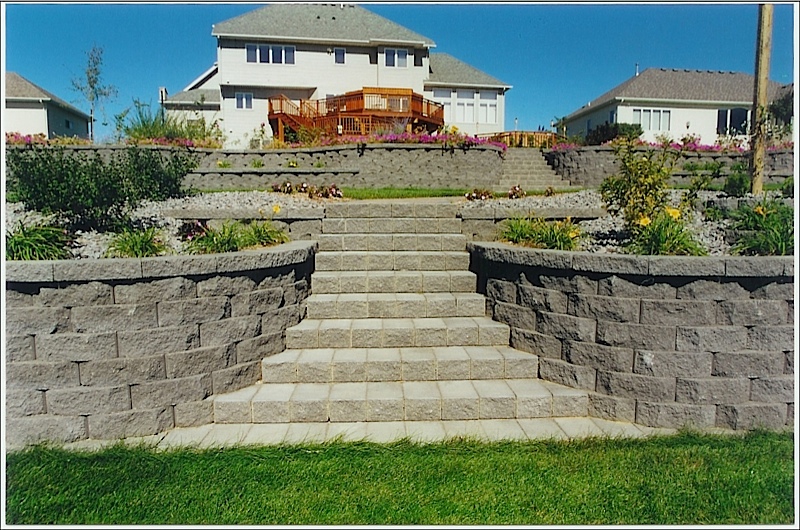
Retaining walls add appeal and practical benefits to just about any landscape. By holding in a volume of soil and preventing it from collapsing into a slope, they can:
- Stop soil erosion in hilly areas where rain would otherwise chip away at the landscape.
- Manage water flow away from your home, garage, and other structures, to reduce the chance of flooding.
- Create terraces that give you more flat space to enjoy on hilly terrain.
- Be used as boundary markers that are clear, but more subtle than a fence or wall.
- Be used to create raised garden beds.
- Add visual interest to otherwise flat landscapes.
Although all retaining walls hold back soil, they can be built in many shapes and styles, and from several materials. Block, stone, and timber are classics, and each has its own unique benefits and appeal. We install each type of retaining wall.
Why Choose a Block Retaining Wall?
Because blocks are made from poured concrete, they are engineered for strength, durability, and are low maintenance. They come in many colors, shapes, and texture options, including artificial stone.
The blocks, being made in uniform sizes, can form impressively solid walls. Some varieties have a lip that lets each row interlock with the row below for even more strength.
Block walls are great for areas with high soil pressure, such as steep slopes or water-saturated soil, as they can form the strongest retaining walls. When strength is not the primary focus, many people choose block for the large variety of color, shape, and texture options.
Block Retaining Wall Installation Process
Here’s how a typical block retaining wall is installed. The first step is to dig a level trench about six inches deep and twelve inches wide, filling it with several inches of compacted gravel. This gives the wall a solid foundation.
Good drainage is important, otherwise too much water can build up behind the wall, damaging it or creating waterlogged soil. To help with drainage, we install a layer of landscape fabric behind the blocks, and fill the area behind the wall with gravel. This creates a porous layer that helps diffuse water more quickly into the soil below.
Once the wall is nearing its finished height, we lock it in place using concrete adhesive on the top two rows of blocks. For some walls, this is the last step, and they’re completed.
You may choose to add capstones to the wall, to give them an extra finishing element. These also come in a variety of colors, shapes, and sizes.
Block retaining walls used in residential landscaping are typically around three feet high. However, we have experience building walls much higher. If you need a tall or unusually shaped retaining wall, the Landscape Guys can build it!
Contact us today to get started.

